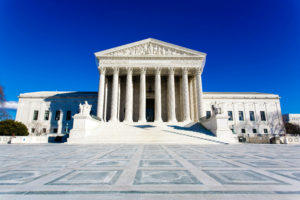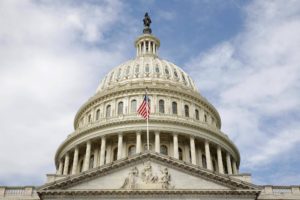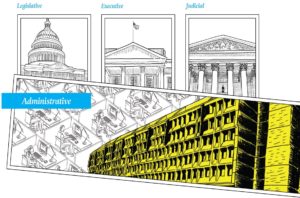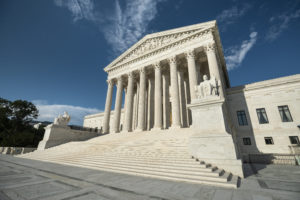National Review: Ending the Administrative State Is an Uphill and Necessary Battle for a Free Nation
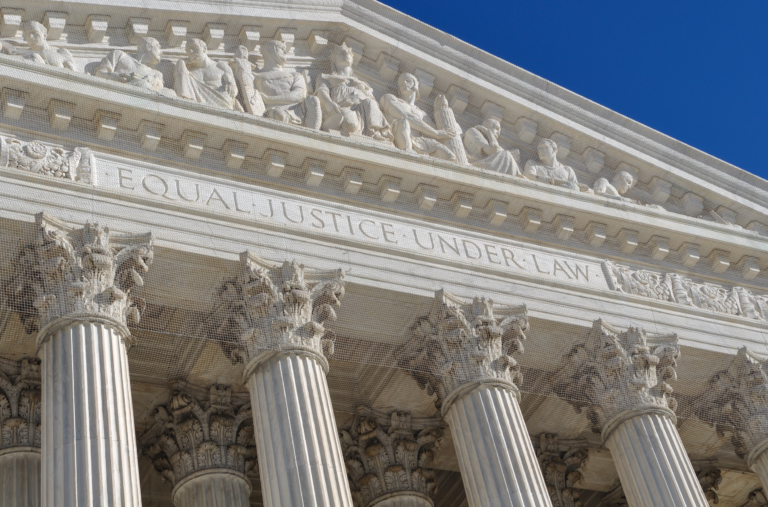
James Madison defined tyranny as the “accumulation of all powers, legislative, executive, and judiciary, in the same hands.” Yet, according to many prominent progressives, this venerable principle that inspired our constitutional structure is an existential threat to the modern architecture of the federal government. Take, for instance, a New Republic article, which sees Madison’s remedy for tyranny as an evil plot to sink the entire federal bureaucracy.
In “The Plot to Level the Administrative State,” New Republic writer Matt Ford warns that some Supreme Court justices want to revive the nondelegation doctrine — a fancy term for the idea that Congress can’t punt its lawmaking power to a different branch of government. Many on the left fret that this revival poses an existential threat to the modern trend of bureaucratic rule. I hope they’re right.
This wicked plot began in 1787. That year, our Founders built a constitutional structure unique in history — a binding document that separated government functions into three distinct spheres: legislative, executive, and judicial.
Article I vests the legislative power in Congress and sets rules about how lawmaking happens. It splits the lawmaking body into two houses, determines how the lawmakers are selected, and requires that legislation pass both houses and be presented for the president’s approval. Other rules abound, such as requirements that tax bills begin in the House and that no legislator can be appointed to a federal civil office during their tenure.
These rules rein in the power to pass laws that bind the people. If Congress could abdicate such authority to the executive branch, which faces no similar constraints, then those constraints would be meaningless. The power to make laws would face few barriers to abuse. Yet that is precisely what is happening today.
A few statistics demonstrate the degree to which the lawmaking authority vested in Congress has been passed off to eager bureaucrats. In 1950, the Federal Register — the federal government’s daily journal containing rules, proposed rules, and public notices — published 9,562 new pages. In 2016, that number had exploded by 97,069 new pages just that single year, the vast majority of them dedicated to new rules and proposed rules.
These rules aren’t just trivial guidelines. Many of the rules have the power to strangle the economy, trample individual rights, and slap the public with severe criminal penalties. In 2016 alone, federal agencies adopted 127 new “major rules,” meaning rules that result in either an annual effect on the economy of at least $100 million, a major increase in costs to consumers and businesses, or significant adverse effects on competition, employment, innovation, etc. Hence, the administrative state does a whole lot more than administer; it rules. And that ruling power lacks safeguards that restrain Congress, allowing administrative agencies to act simultaneously as lawmakers, prosecutors, judges, and police officers. In short, the modern administrative state increasingly resembles James Madison’s idea of tyranny.
This “headless fourth branch of government” is exactly what the Founders sought to avoid by dividing power among independent branches. They knew that the lawmaking power would be ripe for abuse if they didn’t rope it off from the power to execute and adjudicate the laws. Madison described the problem this way: “In framing a government which is to be administered by men over men, the great difficulty lies in this: you must first enable the government to control the governed; and in the next place oblige it to control itself.” The Framers’ answer to this difficulty is two-fold: Make the government dependent on the people and separate the functions of the government so that ambition will counteract ambition. Delegating the lawmaking power to unelected bureaucrats dissolves both these safeguards.
This development was not an accident. Progressives in the early 20th century picked at the fabric of our constitutional design with the exact intent to unravel the separation of powers. Major political figures of the early 20th century exhibited a cavalier disdain for checks and balances. Teddy Roosevelt, a man perpetually impatient with obstacles to his sweeping vision, said: “The danger to American democracy lies not in the least in the concentration of administrative power in responsible and accountable hands. It lies in having the power insufficiently concentrated, so that no one can be held responsible to the people for its use.”
And Woodrow Wilson claimed that “the radical defect in our federal system [is] that it parcels out power and confuses responsibility as it does.” This is a man who said that, if he could, he would “be willing to go farther and superintend every man’s use of his chance.” Of course, he couldn’t tinker with individuals’ lives as he wished because the Constitution stood in his way, a document he saw as an outdated product of “the old-fashioned days when life was very simple.”
Today’s defenders of a vast bureaucracy trot out the same, tired argument: Life now is much more complicated than the one the Founders lived in — government allegedly needs the unencumbered power to solve modern problems. I would hazard that the men who tackled the challenges of building a nation, quelling rebellions, and tangling with enemies bent on the demise of a fragile republic might disagree that their era was simpler than ours. In fact, one of the grievances against the king listed in the Declaration of Independence echoes the problems of the modern administrative state: “He has erected a multitude of New Offices, and sent hither swarms of Officers to harass our people, and eat out their substance.” The common denominator that endures from their era to ours is human nature — something the Framers understood well. In a complex world or a simple one, people are prone to abuse power. The structure built by the Framers is the most elegant and enduring answer to that perennial problem.
The “plot” to end the administrative state is, in fact, an uphill battle to reclaim the principles that founded our free nation. If there’s any plot, it’s the one that has been perpetrated since at least the beginning of the 20th century — to put an end to the separation of powers that stands as the primary barrier to ambitious and power-hungry rulers. In any case, if the revival of the separation of powers is indeed a plot, consider me an eager co-conspirator.
This op-ed was originally published by National Review on February 20, 2020.




